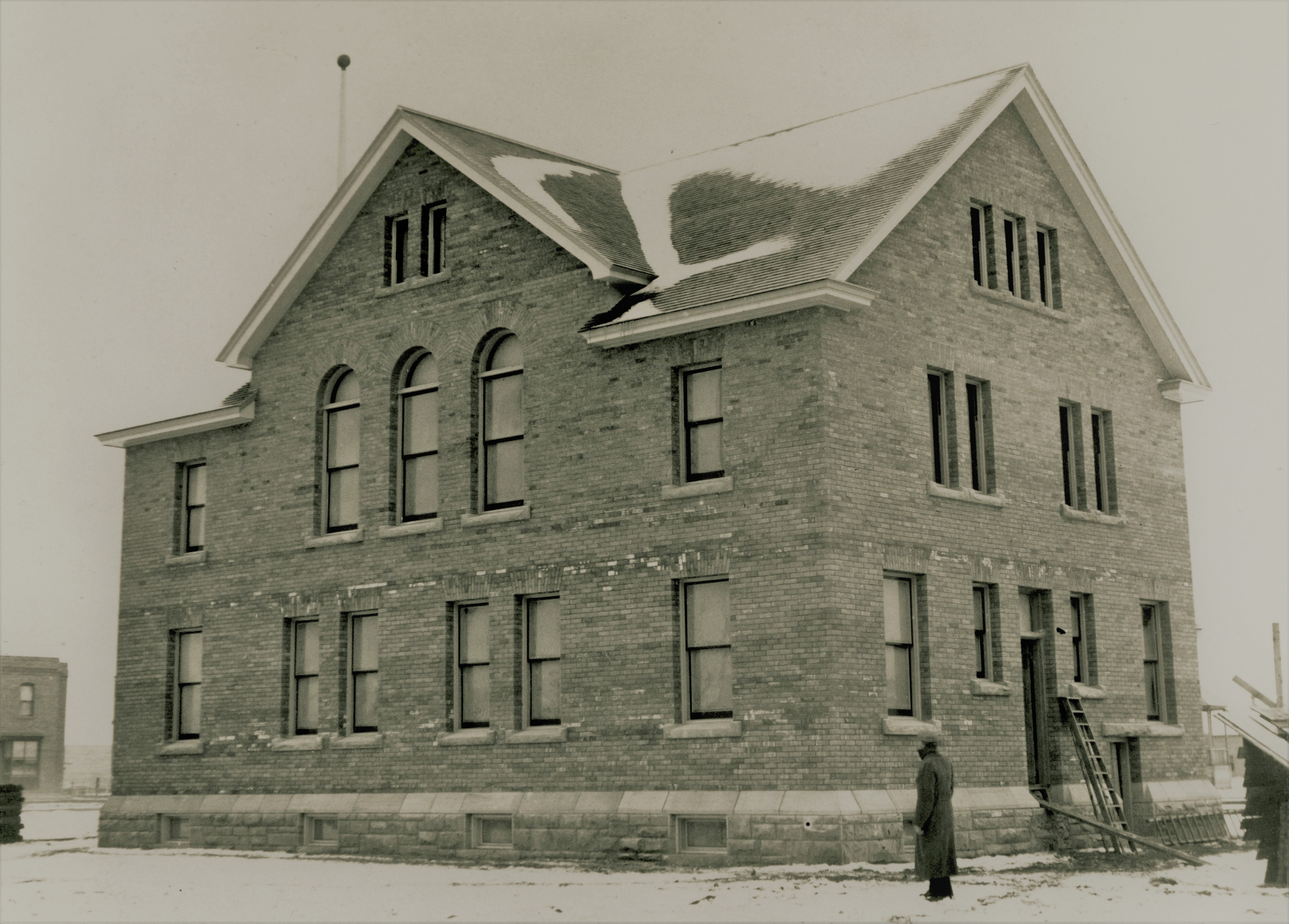On March 30th, 2017, Premier Rachel Notley and Justice Minister Kathleen Ganley came to Red Deer to announce further details on a new $97 million Justice Centre for Red Deer.
While many, particularly those in the local legal and judicial community, welcomed the announcements, it is another chapter in a long and often controversial history of courthouses in Red Deer.
When Red Deer first became a village in the early 1890s, the upper floor of the new brick school house on Nanton (48) Ave. was rented, whenever necessary, for court sessions. The Public School Board collected $5 per day each time the court convened.
Students also looked forward to ‘court days’. They were often given a day off from classes so that the downstairs classroom could be used for witnesses, the police and anyone else who needed to wait for their turn in front of the judge.
In 1903, with the Town of Red Deer starting to grow rapidly, the federal government announced the construction of a two-storey courthouse and Dominion Lands Office on the southwest corner of Ross Street and MacKenzie (49) Ave.
The standard architectural plan, used in other communities such as Medicine Hat and Fort MacLeod, was followed. This was to be the last federally constructed courthouse in Alberta.
The initial contracts were issued in the late spring of 1903, with a construction completion date being set for November 1904.
However, basement excavations did not get underway until May 1904. There were numerous ongoing problems with construction. Finally, in January 1905, Hugh Clarke, an experienced local contractor, was hired to move the project along. The building was finally completed in March 1906.
The first case to be heard in the new courthouse was the murder trial of Ole Brobeck.
This was also probably the first murder trial to be heard in the new Province of Alberta. The evidence against Brobeck was largely circumstantial and he was acquitted. There was an enormous uproar across the province over the verdict.
In 1911, Red Deer entered one of the greatest booms in its history.
In 1913, it was incorporated as a city. There was a significant push to have several impressive new public buildings constructed to match Red Deer’s new civic status.
While promises were made by municipal, provincial and federal politicians at election time, the only structure to actually be constructed was a new Armouries building, south of City Hall (now used as the Red Deer Children’s Library).
A new courthouse would have to wait, even though the existing one had been described during the provincial election as, “Looking more like a grain elevator than a government building.”
In 1915, the federal government announced plans to convert the courthouse/land titles office building into a new post office for Red Deer. The provincial government then began a search for a new court facility.
With the First World War taking up much of the government’s attention and with the urgent need to create a special hospital for shell-shocked veterans (i.e. those suffering wounds to their minds), a decision was made to rent a former blue-jean manufacturing building on the northeast corner of 51 St. and 49 Ave.
The new facility was a modest one.
However, the second floor was converted into the courtroom, with the lower floor providing the space for the court offices.
Some of the pressure on the new building was relieved by moving the Police (Magistrates’) Court to the east wing of Red Deer’s City Hall.
That proved to be a wise move with a surge in the number of cases involving breaches of the Prohibition (liquor) laws.
In November 1922, Canadian legal history was made in this little provincial courthouse. The first court case with women on the jury was held there.
It was a civil trial with a young woman suing for support for her young child. She was successful in her suit.
By 1930, it was obvious that Red Deer would need a proper new courthouse. The 10-year lease on the old blue jean factory was coming to an end.
Moreover, the Great Depression was setting in. The provincial government faced a stiff fight in the pending election. The promise of a new court house would be a way for the government to help the local MLA, George Wilbert Smith, get re-elected.
(To be continued).



